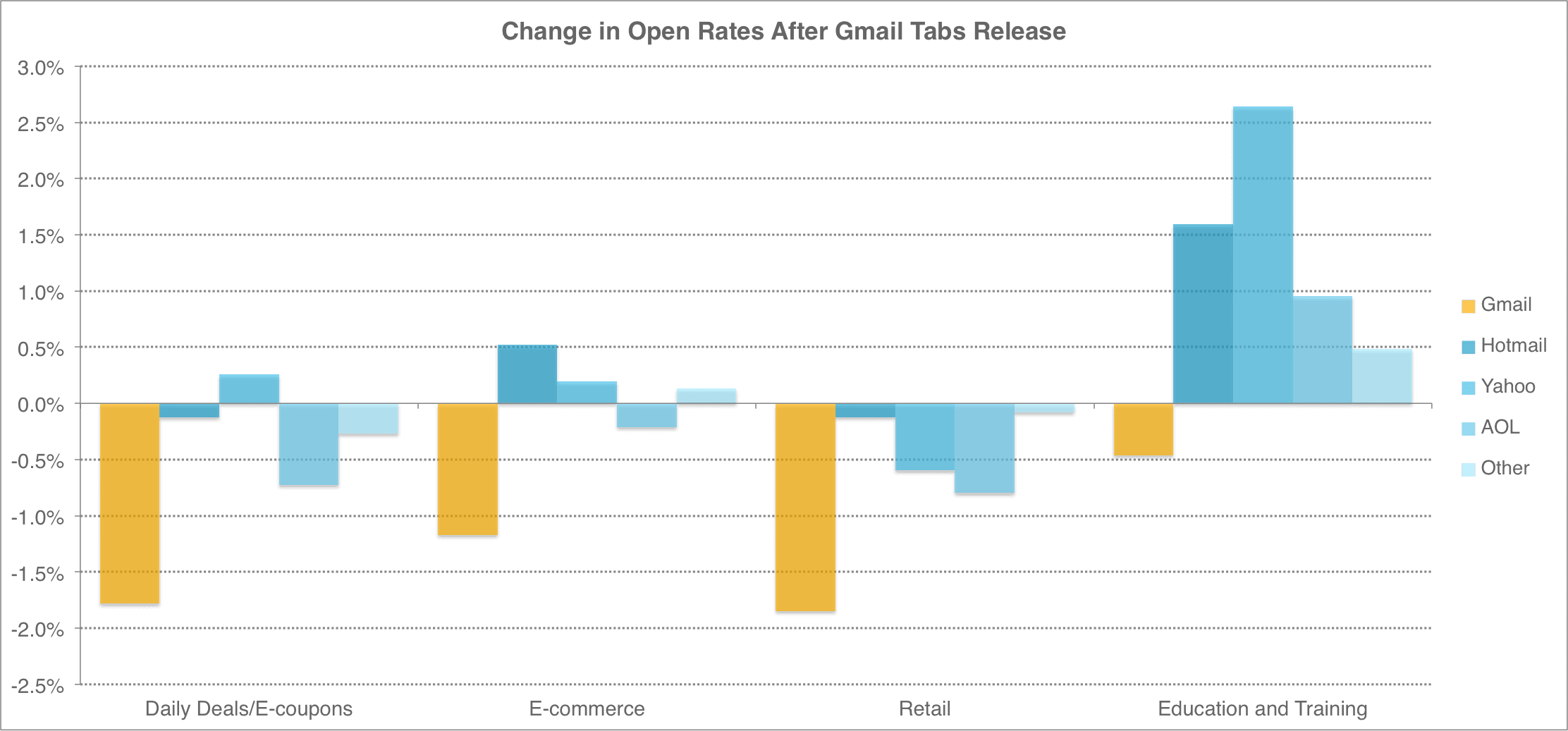A briefing and ressearch on the impact of Google's new Tabbed Inbox
December 2013 update: Return Path have released a comprehensive study evaluating the impact of Gmail's tabbed inbox. We have added it to the end of Tim's post to enable readers to compare their open and delivery rates in Gmail.
In August 2013, Google made two important changes to the Gmail inbox that all email marketers need to understand.
What has changed?
The two changes that Google have made are distinct, but have been introduced together.
- 1. Tabs added to the inbox separating promotional, social updates and other email
- 2. Ads that look like emails may be placed at the top of the promotional tab
These changes are being automatically rolled out to all Gmail users.
As Gmail users access their inbox they will see this popup to inform them about the inbox change:
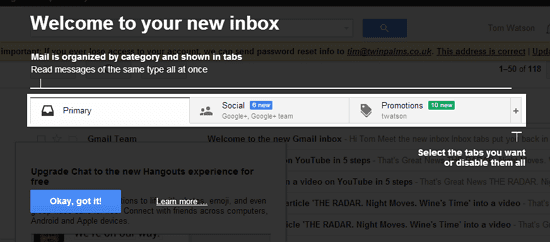
Then the Gmail web interface looks like this with the tabs

And on mobile like this
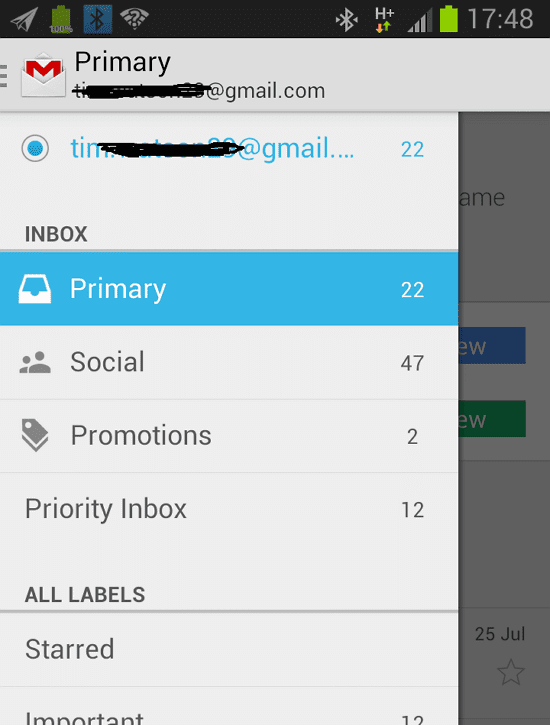
Should an Ad be targeted this is how it appears

The Ads look and behave like emails; they have subject lines, can be opened, clicked and forwarded. It’s as if Google have ‘sent’ a paid for promotion on behalf of the advertiser to the Gmail user. It’s a big vote by Google for the power of the mighty email.
Is Google trying to stop commercial email?
I do not think Google is trying to stop promotional email, rather they are wanting a cut of the action. The fact that Google has put its new email like Ads in the promotional tab means they want, intend and indeed need users to go to the promotional tab.
If users don’t go to the promotions tab then Google won’t get revenue from their Ads and thus Google will change the interface again. Right now Google has a strong incentive to ensure users do review their promotions tab.
What impact will this have?
The real question is not about how inbox functionality has changed but rather will it alter the way that users perceive, think and interact with email?
- Will users just not go to the promotions tab? This would seem an odd behaviour. If someone has proactively signed up and given permission for emails, why would they then totally ignore them? Surely they wouldn’t sign-up in the first place?
- When users do view the promotions tab it means they are in the mood to browse, to do some window shopping. Could this mean that intent to act is increased? By only reading the emails when the intent exists could it increase the quality of clicks making purchase more likely?
- Will it increase further acceptance of promotional email? If all the offers and promotional email is collected together and away from the day-to-day personal communication does it increase acceptance of marketing emails. If so can email frequency be increased without adverse reaction?
Why is Google doing this?
Officially Google are doing this to help Gmail users saying that it “puts you back in control” of your email.
However, it’s no secret Google makes its money from advertising. The fact is Google is clearly making changes to improve the revenue stream it gets from Gmail users. Ads have long been present in the webmail interface in a column down the right side. Google is likely concerned these are too easily ignore and is making it much harder for users to avoid scanning their Ads.
In fact, this is a big acknowledgement from Google about the power of email and the huge revenues email marketers are driving from their lists. Google is clearly looking at the revenue and working out how they can piggy back off of the success of email marketing.
What should I check?
Check your database to see how many Gmail users you have. If you are strongly B2B its likely to be small and the change will have minimal material impact.
MailChimp ran analysis last week to see if this change has impacted open rates and the first signs are there is a small impact, a drop of 1% from 13% to 12% on open rates.

Open rates provide a view of campaign impact. However, open rates are not a strong indicator of commercial success and don’t map to conversion at all accurately. To really understand if your activity has been impacted check your conversion and revenue metrics, look at whether the revenue per Gmail subscriber per month changes.
If you can’t check your revenue then check your click rate. Some email platforms provide a report out of the box to segment campaign performance by domain, here’s an example from Emailvision:
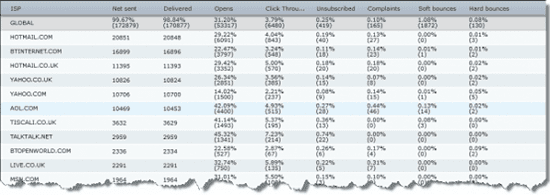
The rollout has been happening in June, so look at trend changes in the three months before June and compare against August onwards.
What action should I take?
Some brands have pushed out an email segmented to Gmail customers with advice on how to get their emails placed in the Primary tab rather than the Promotions tab.
This example spotted by Alchemy Worx from the Outnet.
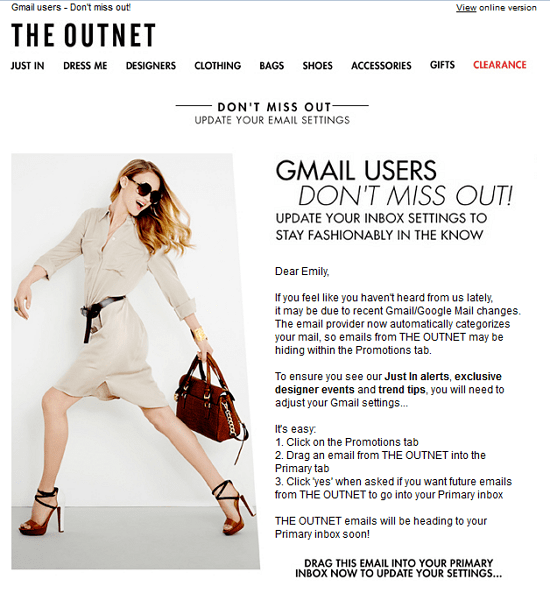
In short ask customers to do one of:
- Star your emails*
- Move one of your emails to the Primary tab
- Drag and drop one of your emails to the Primary tab
*Default behaviour for starred emails is to go to the Primary tab. However this can be controlled by the tab settings dialog that looks like this
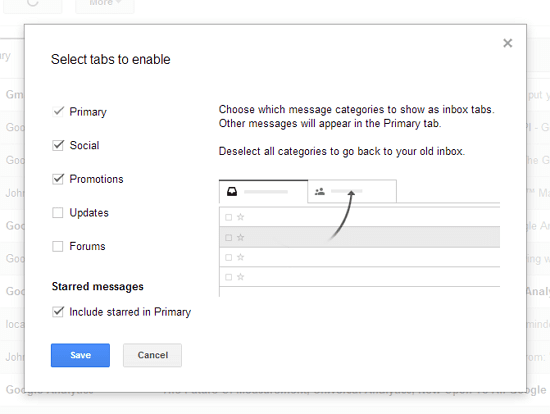
One brand marketer reported they had a 21% read rate from such a message, which they were happy with.
A flash sale might be used to drive customers to move your messages to the Primary tab. Using loss aversion, a pre-flash sale warning message could be combined with a message advising customers how to get your emails into the primary tab, otherwise they may miss the start of the sale.
What about the future?
The truth is that right now we don’t know for sure what the final impact will be. When Google added the priority inbox there was a mass of concern and gloom. After the dust settled there weren’t reports that it had made a material difference to email effectiveness.
This isn’t the first and neither will it be the last change to way the inbox works.
Email sits at the core of the online world, everyone person online has an email address and checks their inbox. There are no signs that this is going to change, the need for personal electronic messaging remains and should Google stop the inbox working in the way customers want it to work then they will leave and use a different inbox solution.
For commercial email to stop working requires customers to stop wanting commercial email. Technology can’t change customer desire for offers, deals, information and all the other reasons they sign-up in the first place.
The basics of email marketing are truer than ever. Get opt-in permission and provide email content that on balance is of sufficient value to you customer that you remain wanted and welcome in the inbox on a regular basis.
New December 2013 research on the impact of Gmail's tabbed inbox
This new research from Return Path is based on a decent sample - they analyzed data from its panel of email users—approximately 3 million people who agree to anonymously share their aggregated inbox experience. This includes 400,000 distinct Gmail inbox configurations.
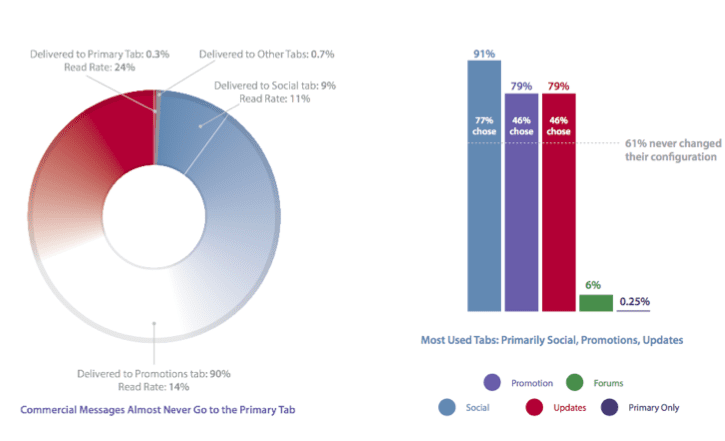
The main findings of the research relevant to email marketers are that:
- 90% of commercial email is delivered to the Promotions tab
- Consumers continued to engage with Promotions emails as shown by the Gmail Before / After open, delivery and complaint rate data below.
- Efforts to persuade consumers to add their messages to the Primary tab made little difference
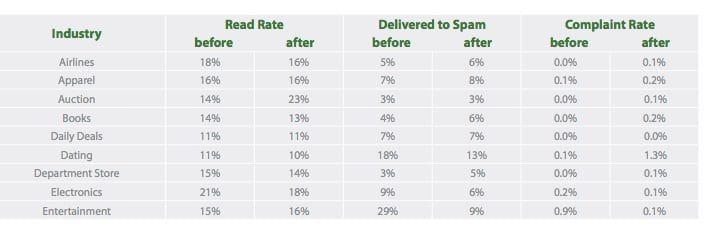
Mailchimp also has a detailed analysis on the impact of Gmail's tabbed inbox on opens . It shows the percentage changes in opens are significant when compared to other email services included for comparison.
